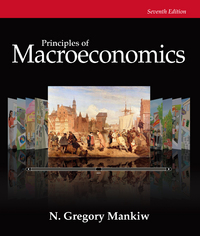Answered step by step
Verified Expert Solution
Question
1 Approved Answer
(25 points). In mid 2014 the value of the Canadian dollar was above 0.9 US dollars. At the time, world oil prices were about US$100/barrel.
(25 points). In mid 2014 the value of the Canadian dollar was above 0.9 US dollars. At the time, world oil prices were about US$100/barrel. Over the next 5 years both oil prices and the Canadian dollar fell sharply. At the outbreak of the pandemic, oil was selling at about US$60/barrel and the C$ had sunk to about 0.76. Since the pandemic, oil prices have recovered while the C$ remains stuck at around 0.75. Explain how the Balassa-Samuelson model of real exchange rates might help to explain the recent behavior of the C$. (Hint: Canada exports oil and is a price taker in world markets. Hence, you can think of an oil price change as a change in the productivity of Canadian tradeable goods). How might you explain the puzzling experience since the pandemic, when oil prices rose and the Canadian dollar stayed constant? (Hint: How do you think the 'green transition' has affected the productivity of Canada's tradeable goods industry?)
Step by Step Solution
There are 3 Steps involved in it
Step: 1

Get Instant Access to Expert-Tailored Solutions
See step-by-step solutions with expert insights and AI powered tools for academic success
Step: 2

Step: 3

Ace Your Homework with AI
Get the answers you need in no time with our AI-driven, step-by-step assistance
Get Started


